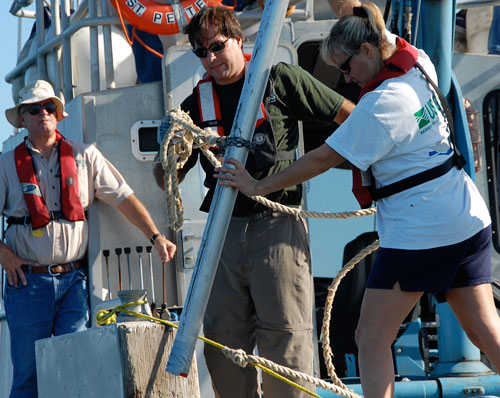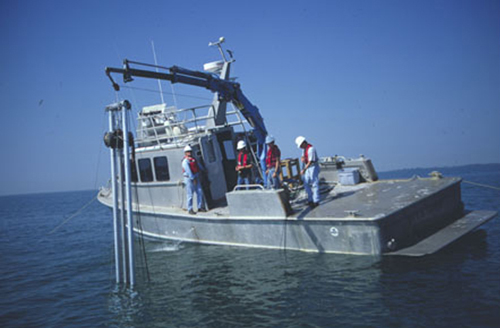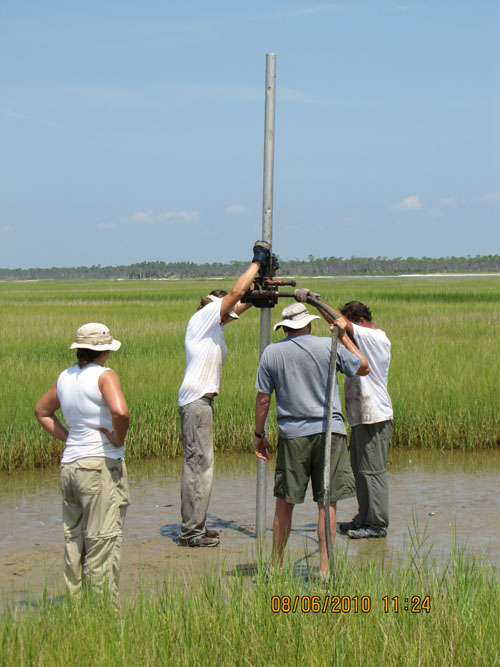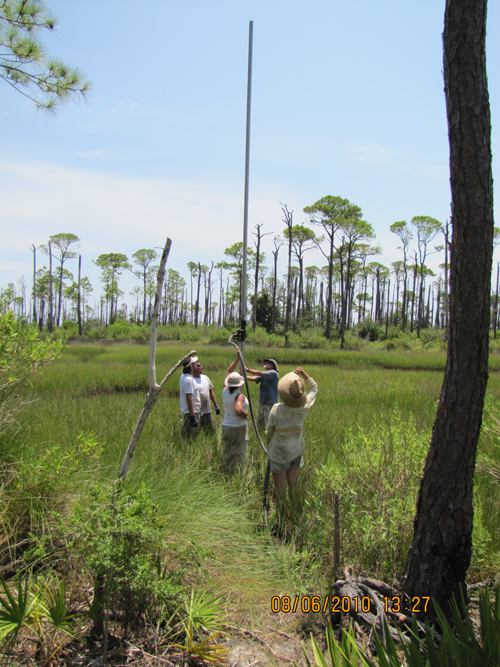Field Data Collection
Marine and Terrestrial Vibracores
Twenty-nine marine vibracores were collected from the USGS RV G.K. Gilbert using a hydraulic crane to position, deploy, and recover the vibracore rig (figs. 2 - 4; for a USGS podcast of vibracoring procedure, go to http://gallery.usgs.gov/videos/534). A Rossfelder model P-3 electric motor encased in a waterproof housing driving offsetting concentric weights was used to vibrate 3-inch (in.; 7.6-centimeter, cm) diameter by 20-foot (ft; 6.1 meters, m) long aluminum core barrels into the sediment to refusal. For each core site, the core number, location, local water depth, and recovered core length as well as any other relevant information were recorded.
Eleven terrestrial vibracores were collected on Cat Island using the assemblage of an 8-horsepower Briggs and Stratton motor attached to a Dreyer 2 1/8-in. concrete vibrator head with an 8.5-m-long shaft (figs. 5 and 6). The vibrator head has a galvanized steel clamp with a quick release system for connecting the clamp to 3-in. (7.6 cm) diameter aluminum core barrels of varying length. The core barrel was inserted into the subsurface until refusal, and measurements were taken on the inside and outside of the barrel prior to extraction to determine compaction or core shortening values (Morton and White, 1997). After extraction, each continuous core length was capped, sealed, and labeled with the core number and orientation. For each core site, the core number, location, recovered core length, and compaction measurements were recorded. All vibracores were transported to the core-analysis laboratory at the USGS St. Petersburg Coastal and Marine Science Center (SPCMSC).

Figure 2. The RV G.K. Gilbert and crew collecting a marine core with hydraulic crane, motor, and core barrel (photo taken in Tampa Bay, offshore St. Petersburg, Florida).
|

Figure 3. Vibracore after being brought up to boat. The bottom of the core has been capped and taped and is pictured being lowered back down to cut and tape the top (photo taken in Tampa Bay, offshore St. Petersburg, Florida). 
Figure 4. Vibracore rig being deployed to seafloor with hydraulic crane aboard the RV G.K. Gilbert. . |
|

Figure 5. Terrestrial coring on Middle Spit of Cat Island, Mississippi (photos by Meghan Alesce). |

Figure 6. Terrestrial coring on Cat Island, Mississippi (photos by Meghan Alesce). |

